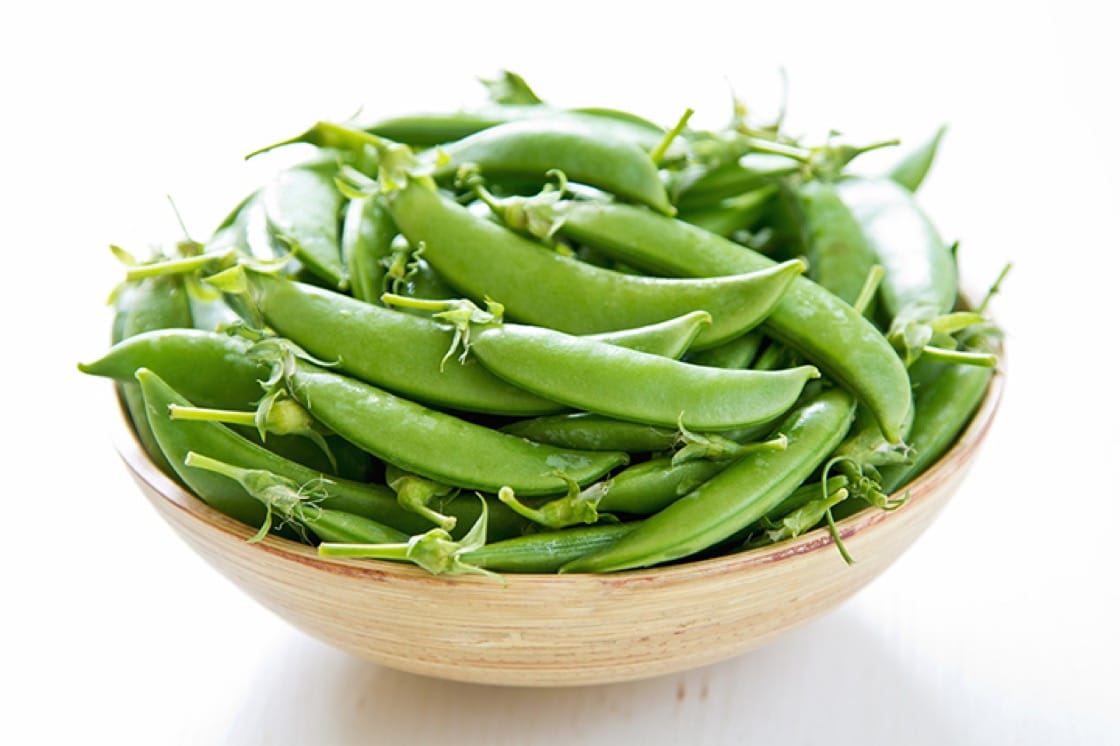Peas are one of my favorite vegetables, and there's nothing quite like them when at their peak. Members of the legume family, peas come in shelling (aka. garden, sweet or English), snap and snow varieties, peas are roughly in season spring through fall. They are a cool weather crop and one of the earliest to mature come spring, taking roughly two months from when the seeds are planted until the first growths are ready to be picked and eaten.

Shelling Peas (Garden, Sweet, English)
Shelling peas are what one usually thinks of when someone just says "pea" without any preceding descriptor—they are the small, round, green balls that most people are very familiar with. They are called shelling peas because the pods are inedible and need to be removed in order to get to the sweet seeds inside. These are the most nutritious of the three types, but are often rarely found fresh in grocery stores because of the extra work required to shell them. However, they are a staple in the frozen vegetable section and can be consumed after just a quick thaw.
Snow Peas
Popular in stir-fries—hence sometimes being called Chinese peas—these are the flattest peas and can be eaten whole, pods and all. In fact, the French name mangetout, translates to "eat all." Snow peas are picked when the seeds are just starting to form. If allowed to mature, the pods will become tough and inedible, requiring you to shell them like English or garden peas.
Snap Peas
Sometimes called sugar snap peas, this variety is a hybrid of shelling and snow peas. They should be crisp and plump when picked, with a nice audible snap when broken in half. (A great way to remember which variety is which.) Snap peas are great raw or cooked, and are a popular feature on crudités platters, perfect for scooping hummus and other dips.How to Store and Prepare Peas
Peas start to deteriorate in quality, particularly sweetness, quickly after being picked, so they should be consumed immediately once purchased or within just a couple of days of being stored unwashed in the refrigerator. Garden peas should only be shelled right before use. Some varieties of snow and snap peas have fibers along the seams that should be removed before consumption. Peas are often best eaten raw or only lightly cooked, helping to preserve their color and vitamin C.This verdant vegetable can be found in myriad preparations at restaurants across the country. Lord Stanley serves chilled English peas in the pod with avocado and green olive as a snack to Bay Area restaurant goers. Chef Harold Moore offers diners a chilled pea soup made from a mix of English, sugar snap and snow peas blended with a smokey onion broth and garnished with rosemary cream, bacon bits and croutons at Bistro Pierre Lapin in New York City. And at one-MICHELIN-starred Sepia in Chicago, executive chef Andew Zimmerman currently has an appetizer of rabbit cappelletti on the menu with English peas, lavender and nettle broth.
Whichever variety you prefer and however prepared, peas sure are ap-peas-ing.





















